#TBT The Rado Captain Cook – A Rare 1960’s Diver That Spawned a Reissue
A recurring theme in our #TBT articles revolves around the aberrations from various watch companies. These are the “one hit wonders”, the exceptions and they’re typically major breaks from a brand’s ethos. Think of watches like the Nivada Datomaster, the Meylan chronograph and even the Rolex 1655 Explorer II and you’ll be on my thought train. Today’s excerpt continues the trend with a look at the original Rado Captain Cook. As you’ll see, it’s a timely article, but it’s also a look at a watch that’s essentially escaped view from all but the most ardent dive watch collectors. Hoist the mainsail…all aboard! (Come on, you have to chuckle a bit… 😉 )

A New Rado Captain Cook Was at Baselworld 2017
If there was a true surprise (a positive one) at Baselworld 2017, it came from the avant-garde brand in the Swatch Group stable that tends to focus on the usage of advanced materials, Rado. Rado is a brand that, fair or unfair, barely registers on the Fratello radar. Supremely modern, somewhat austere, and often battery-powered, you’ve signaled to us that you like our focus centered upon Omega with a dash of Hamilton and Longines in between. However, we were admittedly caught looking this year as the brand threw a hanging curve that we should have driven over the left field wall (it’s Summer, it’s baseball season and I’m homesick…sorry). The Rado Captain Cook was debuted in several forms, including a massive 45mm ceramic version, but the one that really drew out interest was a relatively faithful limited edition reissue in 37mm. Friend of the site Jason Heaton wrote a really nice review on the watch over on Hodinkee and it’s definitely worth a read. So, yes, the announcement was a real wild card from the brand because the watch is so “non-Rado”, but also because it’s a truly esoteric choice from the brand’s back catalog. What was the Captain Cook?
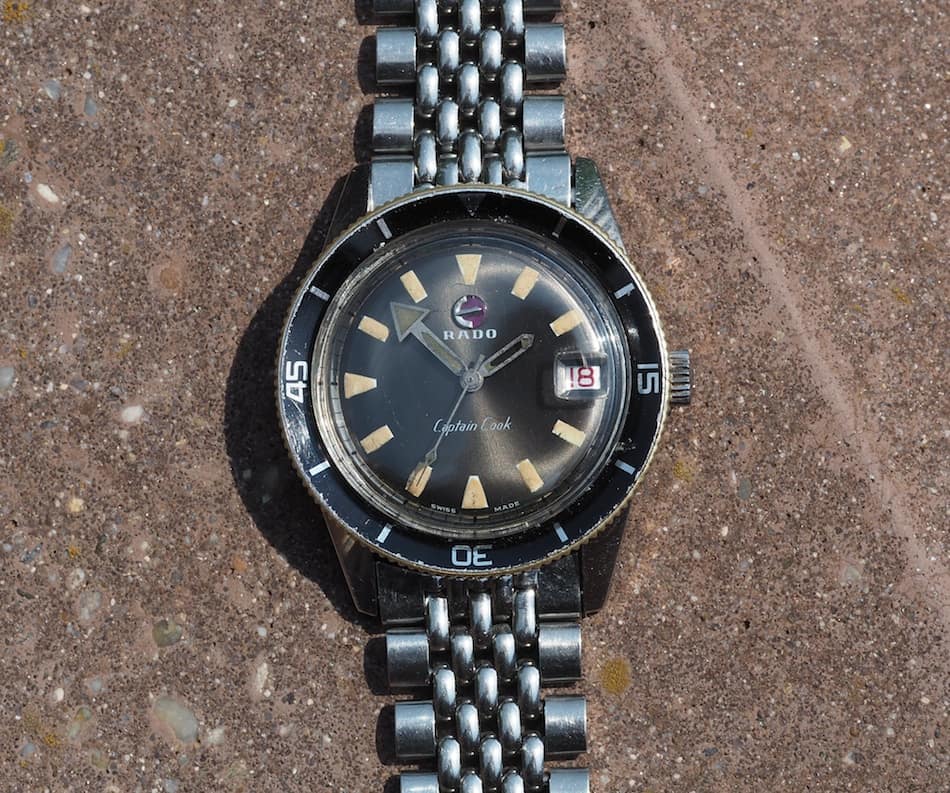
The Rado Captain Cook – a History
We’ve talked about how the diving craze hit full speed in the 1960’s and with that, so many brands introduced watches to meet the demands of the sport. The Rado Captain Cook (named after the famous British explorer) was the brand’s attempt at serving the trend and was introduced in 1962. It was made in low quantities through 1968. For additional information, an article here presents a nice history on Rado and points to a production run of only 8,000 pieces during the Cook’s lifetime.
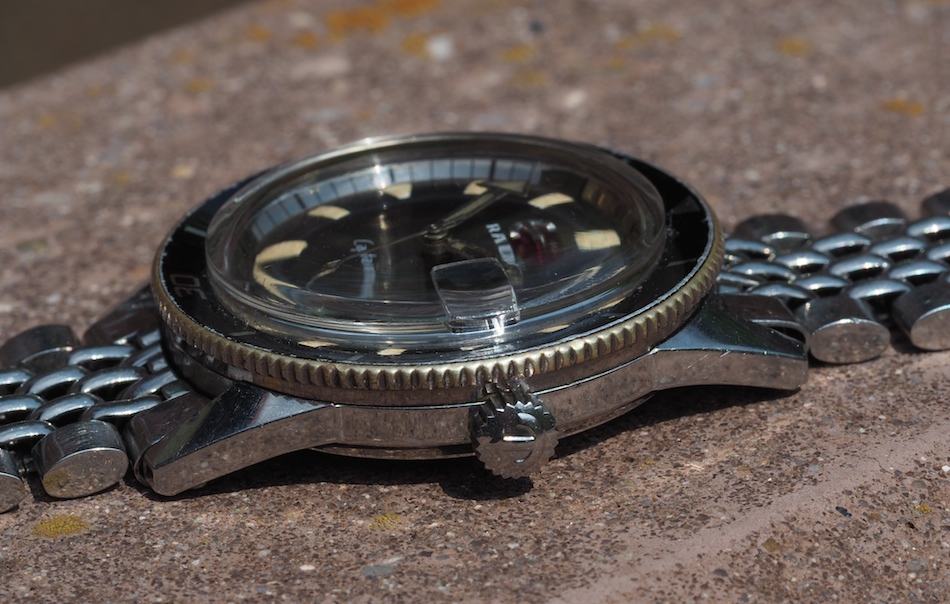
A Depth Rating of 220m Hasn’t Led to Many Survivors
We’ve looked at the bottom dwellers such as the Philip Watch Caribbean and we’ve also reviewed pieces more on the snorkeling side with a comprehensive look at Seiko’s Sport Divers. The Rado Captain Cook, however, falls somewhere in between, but still towards the deeper end of things. I searched and searched and finally found an Old Italian ad for the Cook showing a depth rating of 22 atmospheres or 220 meters (this spec seems a bit audacious and I’m sure it contributes why so few of these watches are around today).
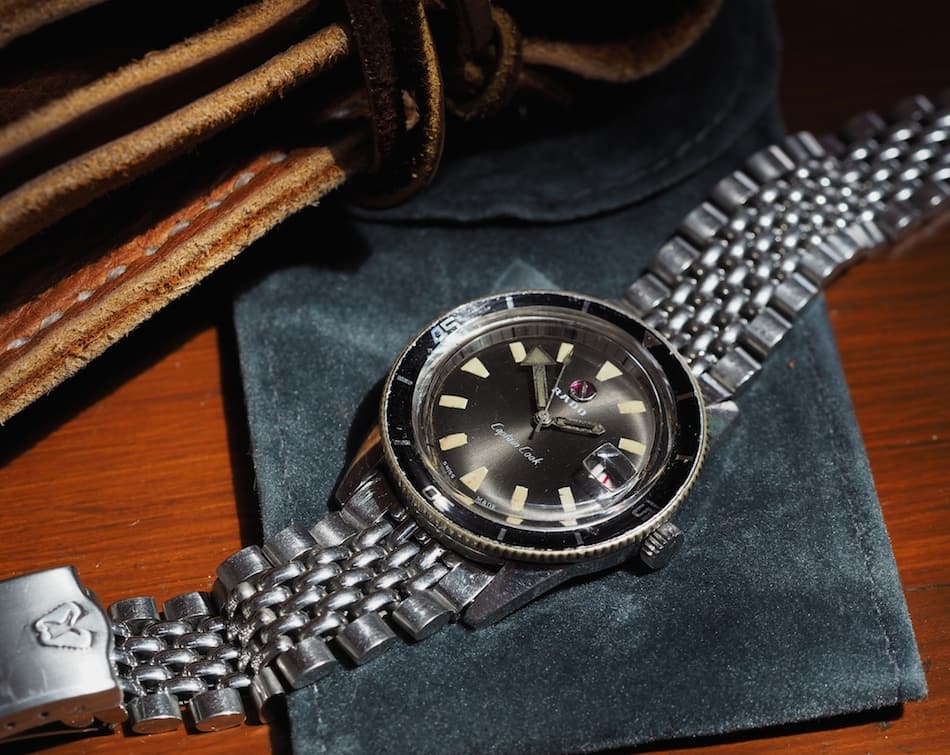
220 meters is a surprise as the depth resistance isn’t even noted on the watch and the crown is a simple push/pull, but the case back seems to hint at more capability than something made for a (swimming) pool shark. I say that because anything showing a Brevet (patent) listing on its case back, along with having a bayonet style of closure, reveals that this diver has some purpose behind it. Oddly, this old watch is supposedly more capable than the new Rado Captain Cook reissue with its rating of only 100 meters.
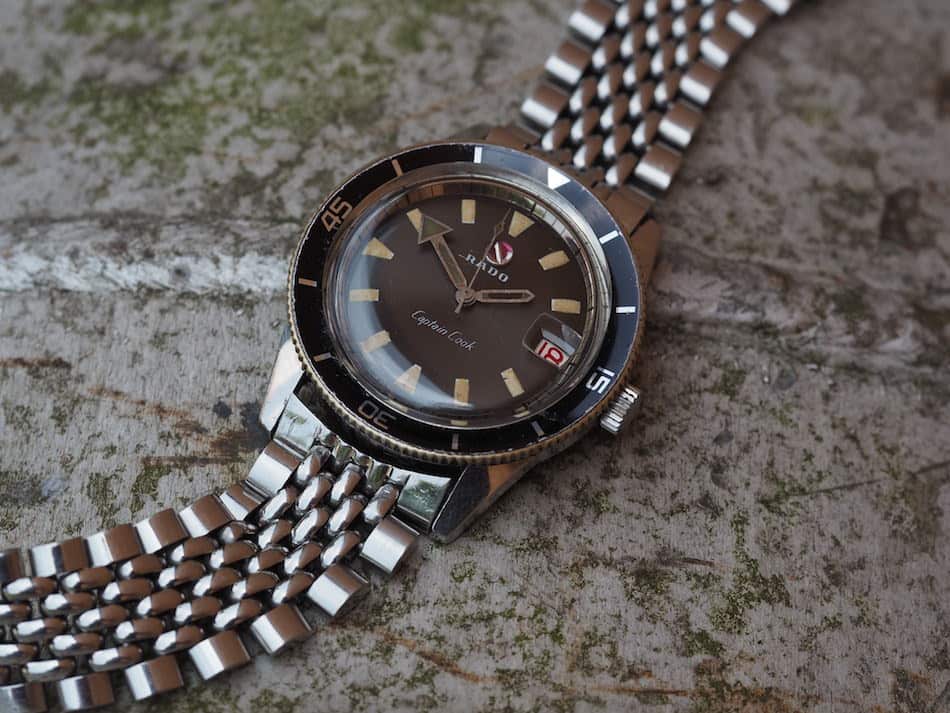
Those Inward Sloping Bezels…
I looked at photos of the new Rado Captain Cook and noticed a very strong case design with good-looking lugs, a nice dial and handset. The kicker, though, was the concave, inward-sloping dive bezel insert mounted on a chrome plated brass bezel. This bezel design was something done for a very brief period of time across several brands and, try as I might, I can’t figure out why, functionally, this was done or if there was commonality amongst the case makers. Maybe it was done to add visual mass or offer some additional protection to the crystal from knocks and bumps. What I do know, though, is that the feature looks awesome and, unsurprisingly, there exists a deep love for these early divers. Therefore, they tend to be expensive and rare. (You can imagine a high mortality rate for these watches – designing a diver with a bezel that channeled water towards the crystal’s seal seems akin to building a house on a floodplain, but anyhow.) Want proof? Go take a look at the Grandaddy of them all, the Breitling Superocean, and its sublime chronograph counterpart, and you’ll view what just might be the most beautiful and elegant dive watch ever created. Similarly, Gruen (with another watch not consistent with its portfolio) had the Ocean Chief and Croton even made a version with the design trait (the Davidoffs had a nice example at the time of publishing). So, yes, this was clearly a trend.
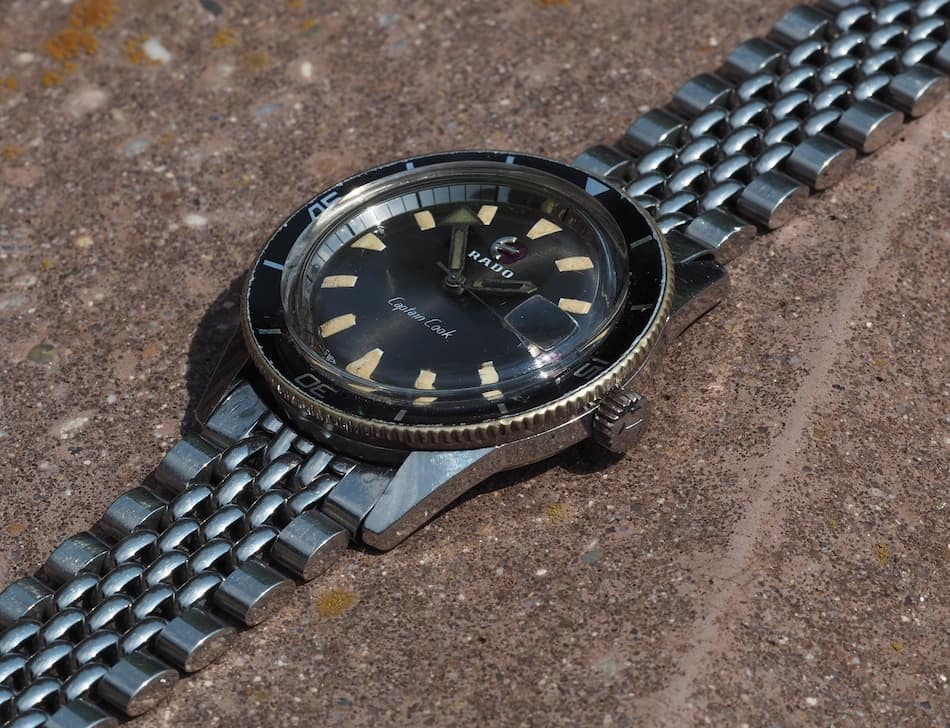
Research and the Hunt Began after Basel
After Baselworld, I set about finding some information on the Rado Captain Cook. Honestly, the number of British history sites about the real-life explorer that came up was amazing, but I soldiered on and read through various forum postings. In the end, there wasn’t a lot out there on this diver. In parallel, I kept my eyes peeled for a reasonably priced piece, which felt unlikely, as some had recently sold for roughly $4,000. Then, one evening, The Intermediator – you’ve seen his work before on a Universal Geneve Compax “Nina Rindt” – let me know that an example had popped up on auction in Japan. Honestly, I’m going to start calling him “The Enabler” as he has a knack for unearthing some great stuff on the set of islands he calls home. In the end, the watch you see here hammered for something less than $2,000 – replete with questionable pictures (once again, how is it that Japan, the land of the camera, loses the plot on auction sites with imaging) – and was on its way to me.
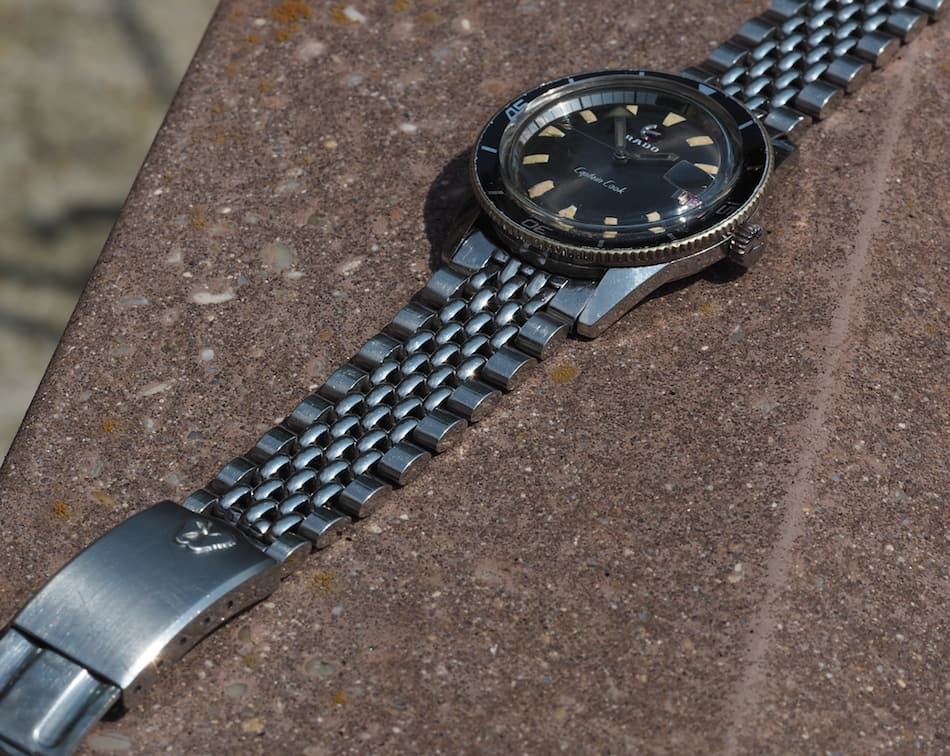
The Rado Captain Cook is Filled with Details
As you can see, aside from missing lume on the hour hand and seriously discolored lume on the minute’s hand, this Rado Captain Cook is in fantastic condition. The rare and original beads-of-rice bracelet – signed Rado on the inside and containing “kissing seahorses” on the clasp – is all there as well as the signed crown.
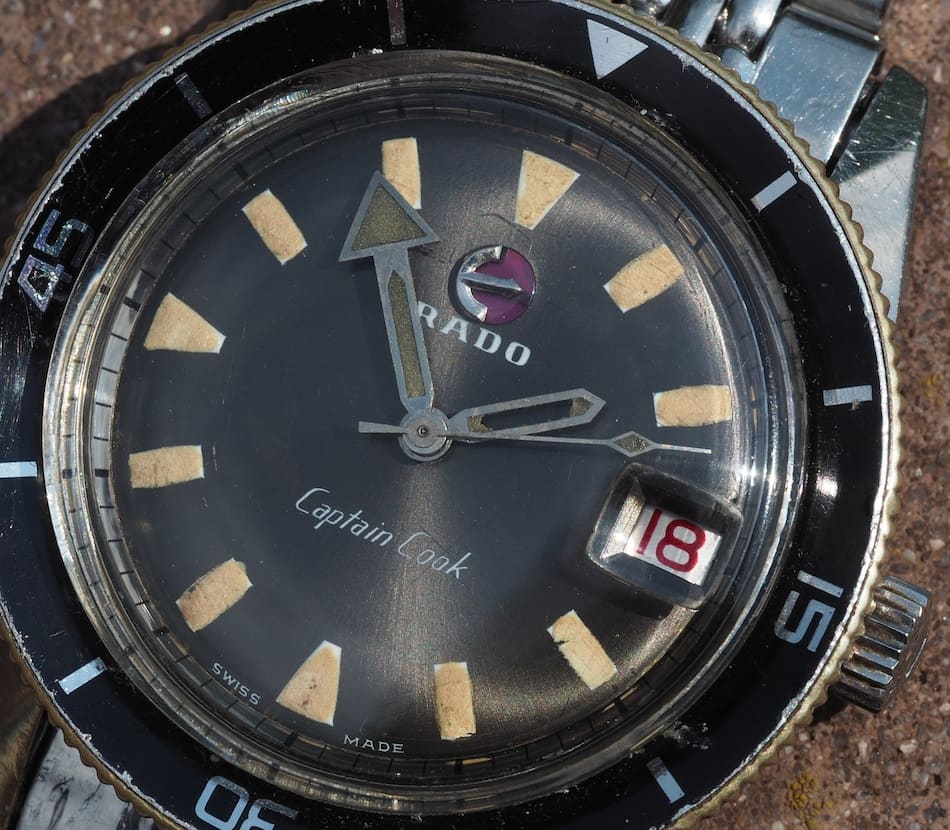
The case is sharp, looks unpolished and the domed acrylic crystal even contains a date magnifying sub lens to see that red font date wheel. The greenish grey striated dial is in lovely shape with its printed lume plots retaining their composure along with a lovely honey hue. Look closely and note the mirrored internal bezel with black indexing for the minutes; there’s simply no damage here. In fact, the only real giveaway that this watch is a Rado is the signature “swinging anchor” below 12:00 that rotates as one’s hand moves. This example’s little pendulum moves but not without serious coaxing.
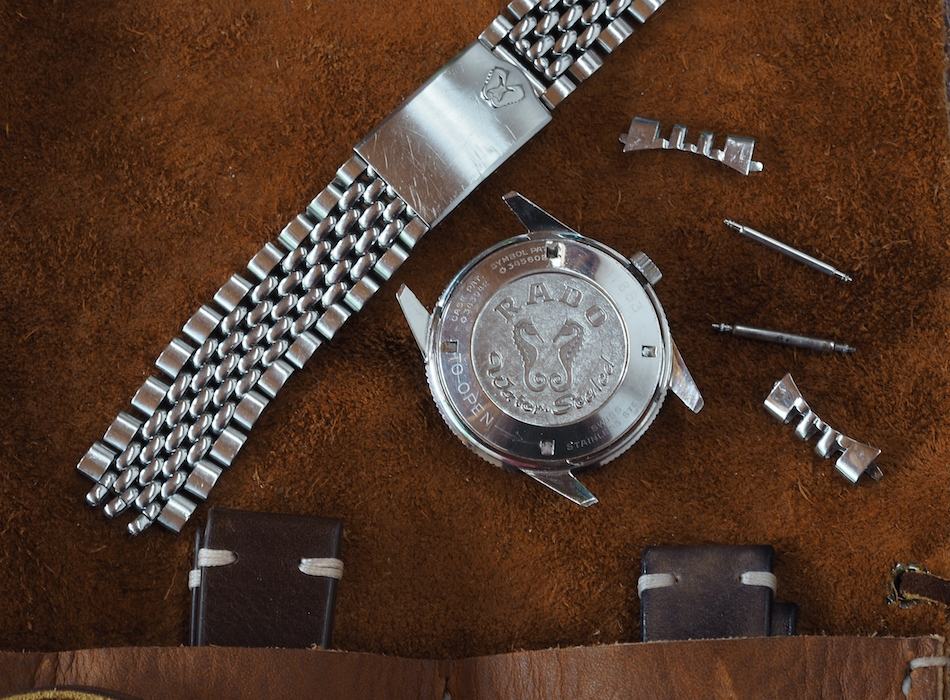
Inside the Rado Captain Cook sits the A Schild AS1701 with a lovely gold plated rotor (you’ll have to trust me on that – I wasn’t gutsy enough to unscrew the caseback). The automatic movement can be hand wound through its single stop crown – no, there’s no screw down here – and I’ve found that it keeps fantastic time. Aside from lacking a quick set date, there’s little to complain about here.
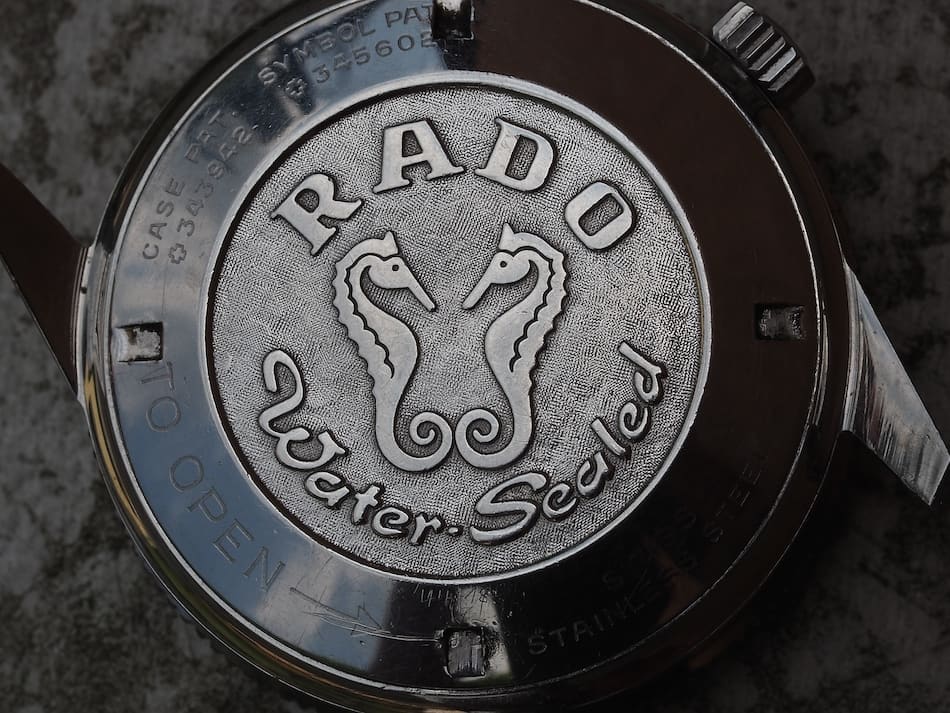
What a Case Back!
One of my favorite features of the Rado Captain Cook, though, is the case back. The detailing is amazing! Just take a look at those huge seahorses along with the script and the finely crosshatched background. Despite bearing a relatively utile dial and bezel, the reverse of this watch is screaming with style. You’d never wear this diver face down, but the temptation exists.
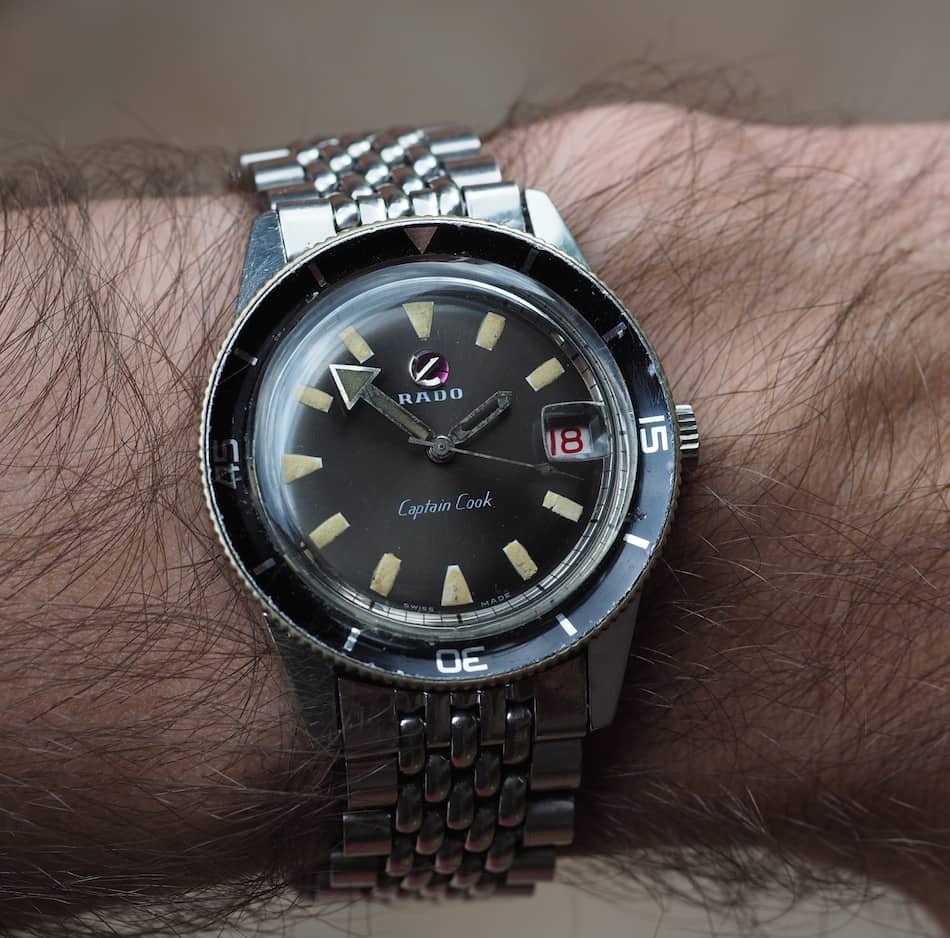
Rounding up to 36mm
From a wearability standpoint, and where the 37mm reissue makes a wise concession to modernity, the original Rado Captain Cook makes do with an odd 35.5mm case size. We talk about watches looking larger due to several mass-enhancing attributes, but this diver truly boxes above its weight class. Due to its relatively thick and lengthy lugs, a bezel that overhangs the case and a sizeable 19mm lug width, this watch could definitely be accused of having Napoleonic disorder. Whilst the pictures in this article primarily show the watch on its original bracelet, it’s too long for me and I’m hesitant to resize it by prying open the small links. Consequently, I’ve been pairing, and wearing, the watch on some rustic leather straps and it looks great. Here again, the 19mm lug spacing turns the watch into something so much different than, say, the original 35mm Zodiac Sea Wolf with its 18mm spacing.
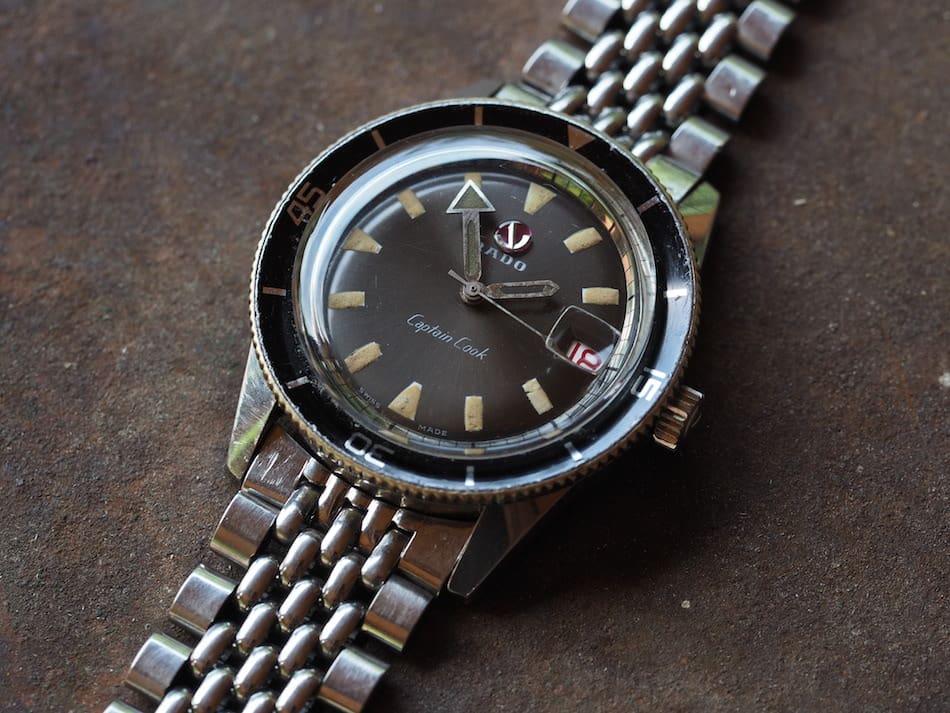
Rare Watches Indeed
Finding a Rado Captain Cook requires patience. A couple versions were made during the first generation’s run (a completely different C-cased version with dual crowns and internal rotating bezel marks the Gen 2). Go search online and you’ll find that the majority of Cooks contain an arrow shaped hour hand whereas mine contains the reverse. I have no idea when the change occurred, if both versions were available concurrently due to several parts suppliers, but both are correct. Additionally, you’ll see slightly different writing at the bottom of the dials in the “Swiss Made” area. There are variants and that likely owes to more than one supplier.
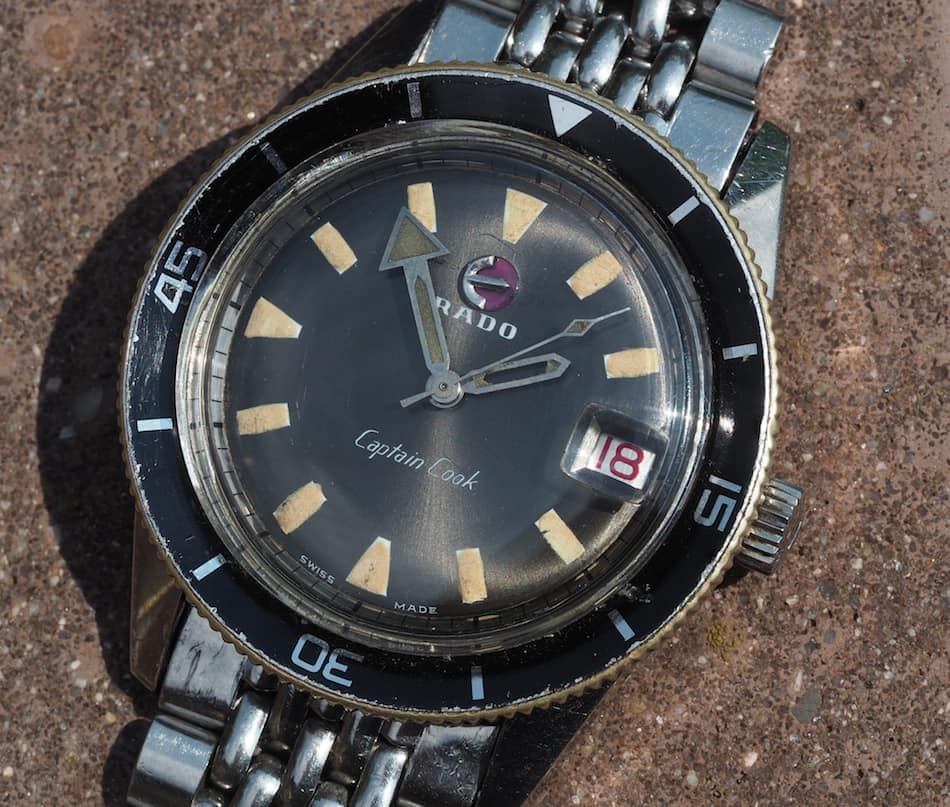
Finally, some Rado Captain Cook watches are signed “Rado Ticino” on the dial. Ticino was the importer of Rado’s in Italy and my guess is that the separate name constituted a separate, local brand in order to achieve import tax savings. Parts wise, I’ve never seen anything for sale to fit these watches, so remain wary of pieces missing major pieces. Mechanically, these are easy watches to repair. On pricing, figure $3,000 plus, but be on the lookout for the random bargain.
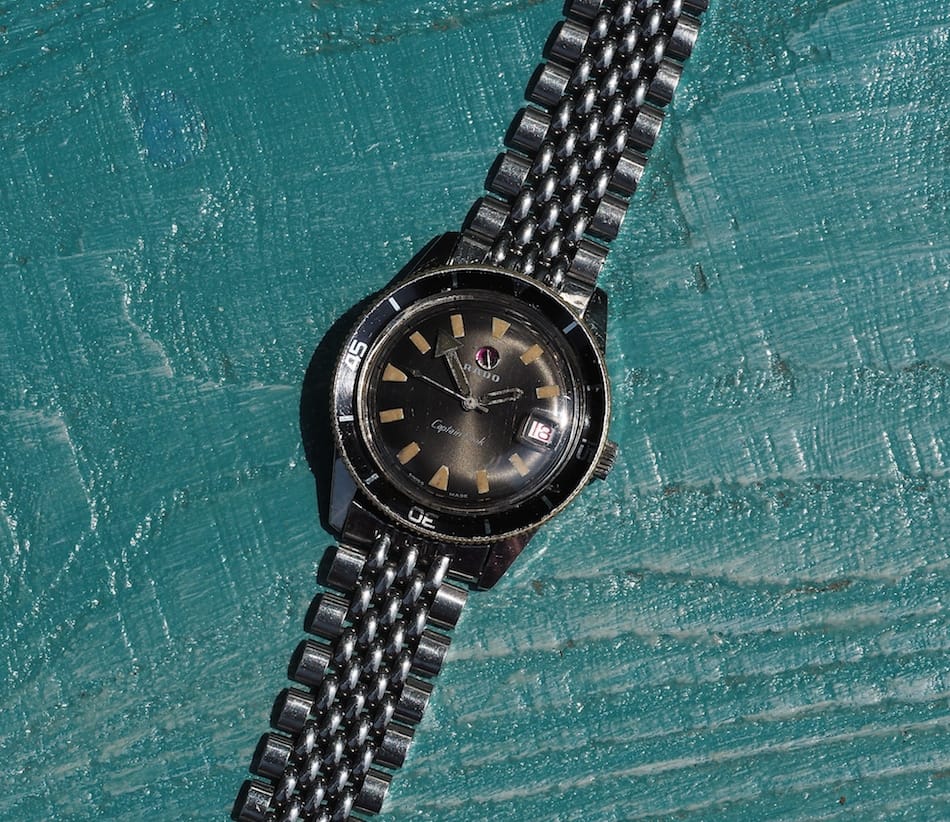
I hope you enjoyed a look at the Rado Captain Cook. Yes, this is an oddball watch, but I think it’s worth mention here on #TBT. Incidentally, if finding one of these or swallowing the high price of entry feels like too much frustration, the limited edition reissue looks like a great buy at well under $2,000. If you do decide to hold out for the “real deal”, I think you’ll be rewarded with a very satisfying and relatively rare dive watch. Until next week!

















